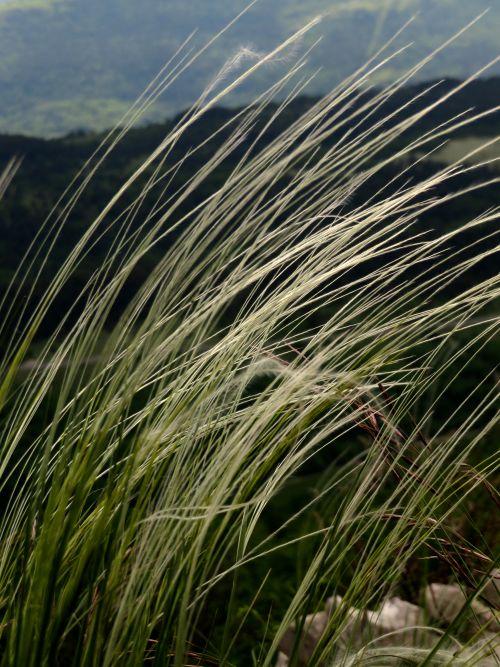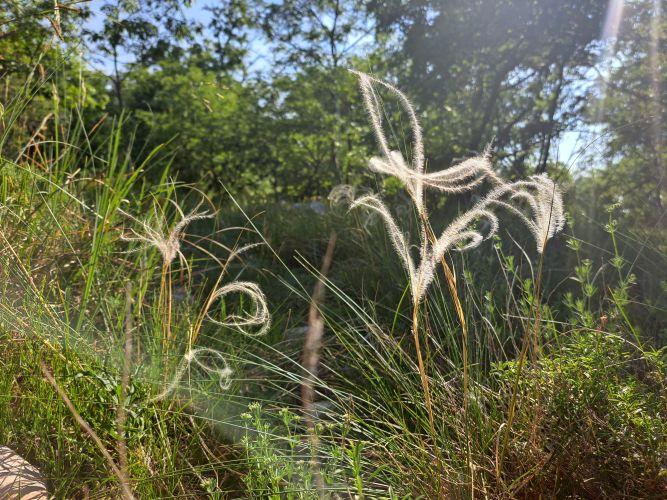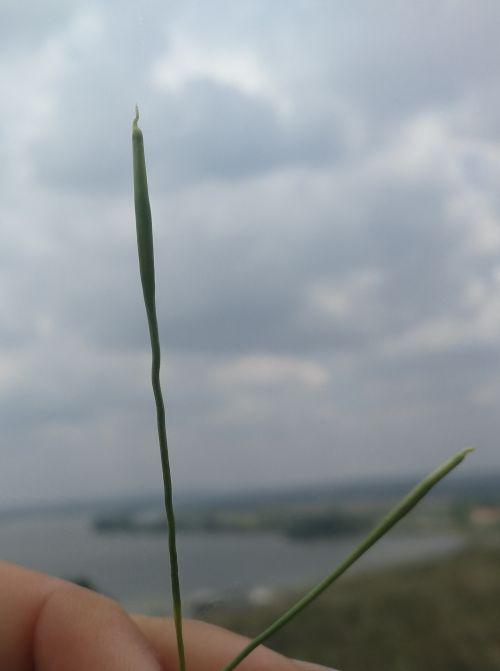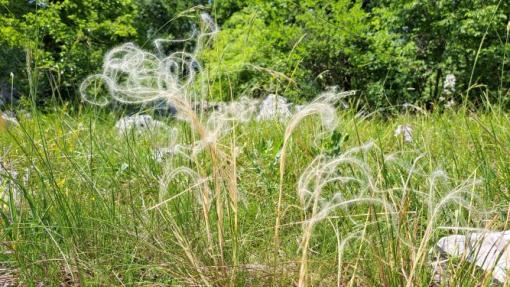One who has travelled through the steppes of eastern Europe or central Asia in late spring may have chanced to admire the silvery-gold ripples of tall grasses in the wind. These are the feather grasses of the genus Stipa.
One might also have walked through the (mostly overgrown) karst grasslands of the Slovenian littoral in May and June and felt perplexed, finding clusters of European feather grass (Stipa eriocaulis) amidst the colourful vegetation in distinctly warm and arid areas. It does seem a little strange that we will find a species of steppe in the Karst (southwestern Slovenia), and for the next time only in the Pannonian Plain (northeast of Slovenian border with Hungary). Is a limestone plateau, which receives 1500 mm of rainfall per year, in any way similar to the great plains with a continental climate, where the annual rainfall yields 1000 mm less? Both areas are characterised by summertime droughts; in the Karst, apart from thunderstorms there is little rainfall for a month or more, and the limestone soils do not retain rainwater on the surface. The grasslands bloom in the height of spring, while in midsummer the vegetation is parched and scorched.

These days, the Karst is a landscape of scrub, thermophilous deciduous low-growth forests and plantations of Austrian pine. Between the 17th and 19th centuries, however, the native oak forests of Karst were almost completely cleared, replaced by steppe of secondary origin. Steppe species found in the Karst today – the upright brome (Bromus erectus), a bunchgrass species Chrysopogon gryllus, the feather grasses (Stipa), the heath grass (Danthonia alpina), the mountain pasqueflower (Pulsatilla montana), the cinquefoils (Potentilla), the peonies (Paeonia) and the flaxes (Linum) – were probably introduced to the area by man several times throughout the history: from the westward migrations of peoples two millennia ago, to the tradition of transhumance which was practiced until the middle of the 20th century (shepherds and their flocks of sheep travelled to the Karst pastures all the way from the western Balkans). The steppe species in the Karst could, however, be a relic of the Ice Ages, since 20,000 years ago this area used to be a steppe.

If you have watched any westerns, you will surely remember an image of a wasteland full of rolling tumbleweeds (e.g. Salsola tragus). In the steppe, many species are dispersed by the wind, which is possible due to the constant winds and openness of the landscape. While we will not encounter with whole plants that get detached and roll away by the time their seeds are ripe in Karst, the feather grasses do possess a curious adaptation to wind dispersal. The elongated seed with a pointy tip is adorned with a 20-30 cm long feathery awn, which endows the diaspore with an ability to be carried across a distance up to 500 m.

When it lands, the awn gets entangled in the surrounding vegetation and the seed jabs itself into the ground. As the dew begins to form overnight, the spiral neck that attaches the awn to the seed begins to twist ever more as the moisture rises – and screws the seed deeper into the soil. While the seeds of other species remain in relatively shallow grounds, the deeper-enshrouded seeds of the feather grass are provided with better conditions for germination.

